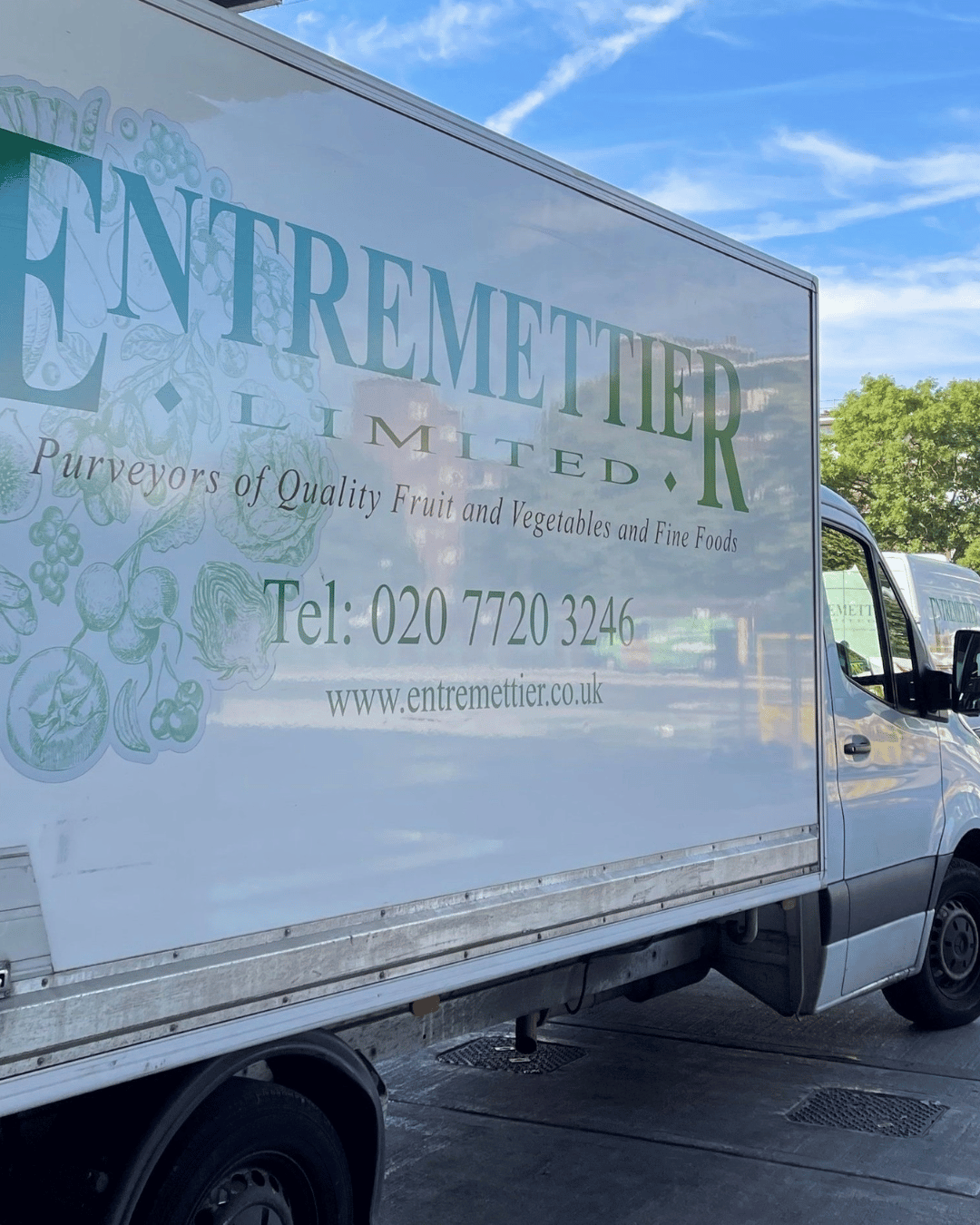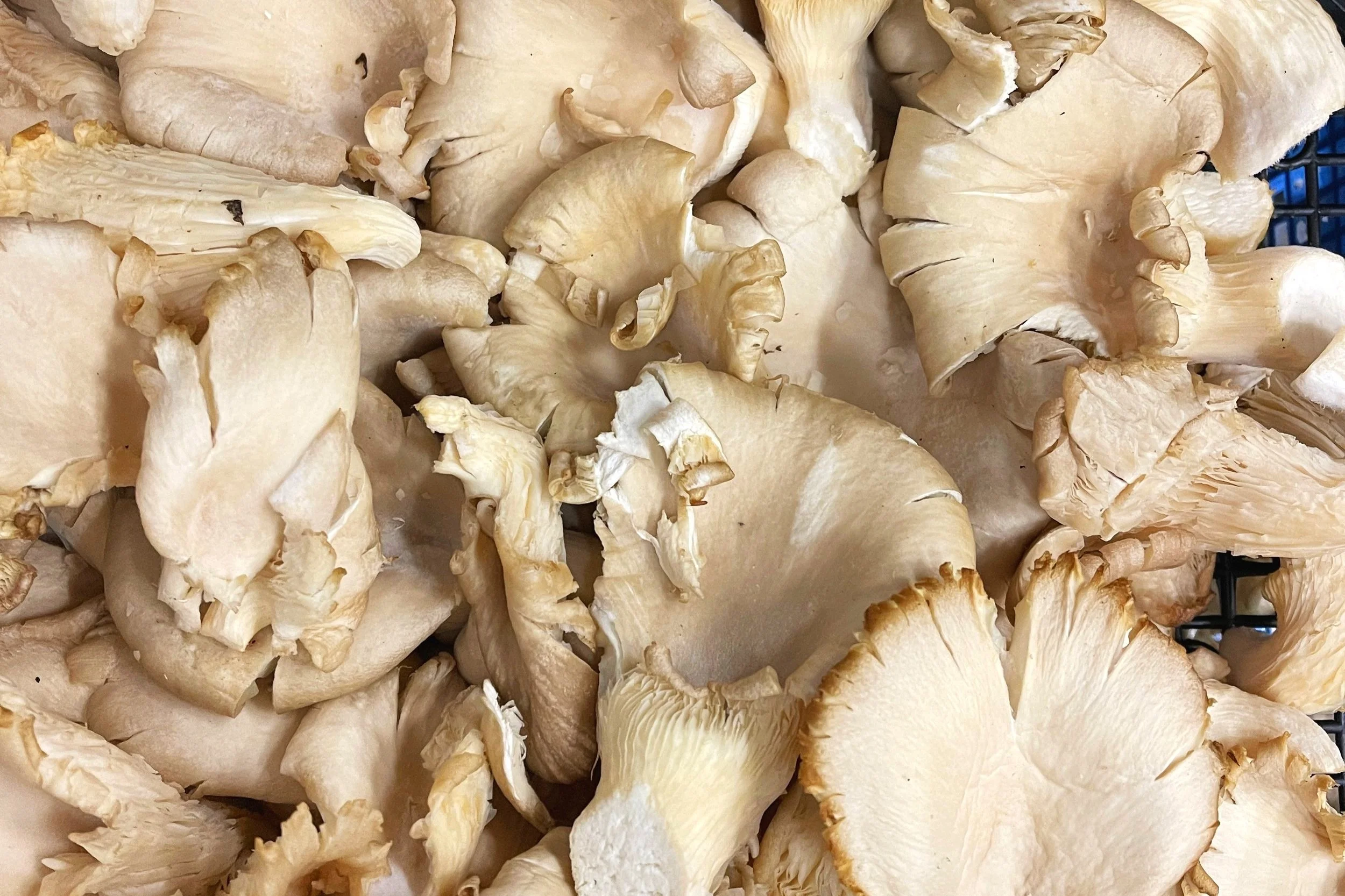Produce: From a Fresh Perspective
Digging deeper into how social media, the economy, and the weather affect the food we order from our favourite London restaurants.
Have you ever wondered where your favourite restaurants source their delicious produce? We went behind the scenes to the people who supply it all, to learn just how they liaise between the best growers and food distributors in Europe.
Emily, Executive Chef and co-owner of Dinner Ladies, and I went down to London’s most famous produce market to see what goes into supplying premium produce to all of London’s finest restaurants and food suppliers.
Located just off Battersea Power Station, New Covent Garden Market is home to one of Dinner Ladies’ favourite produce suppliers, Entremettier. Founded in 1992, Entremettier has mastered the environmentally conscious distribution of the best produce London has to offer. Stepping onto the scene at 9 am, the market was quieter than I imagined it would be. No hustle and bustle of trucks and freights and people swarming to load up and load out. Frankly, the market felt quite dead.
The market, once encompassing hundreds of suppliers, now hosts the few remaining companies who have managed to survive this increasingly treacherous industry landscape. We spoke to Robert, our lovely tour guide and expert from Entremettier, who has worked in the produce market for decades. It was interesting to hear about the changes that he has seen since he started, given his wealth of knowledge and experience. The obvious external factors, like weather and the ever-changing consumer economy, greatly affect supply and demand, as you might imagine; Spain is burning and so, it feels like, are consumer dollars. Not surprisingly, the climate very much impacts what London restaurants and food suppliers can provide to their guests. With a lot of mediterranean crop destruction, suppliers like Entremettier have been forced to look elsewhere for the extremely popular summer produce. With this comes a cost, of course, for Entremettier and for consumers. We have all seen first-hand just how expensive this world has become.
The market, once encompassing hundreds of suppliers, now hosts the few remaining companies who have managed to survive this increasingly treacherous industry landscape. We spoke to Robert, our lovely tour guide and expert from Entremettier, who has worked in the produce market for decades. It was interesting to hear about the changes that he has seen since he started, given his wealth of knowledge and experience. The obvious external factors, like weather and the ever-changing consumer economy, greatly affect supply and demand, as you might imagine; Spain is burning and so, it feels like, are consumer dollars. Not surprisingly, the climate very much impacts what London restaurants and food suppliers can provide to their guests. With a lot of mediterranean crop destruction, suppliers like Entremettier have been forced to look elsewhere for the extremely popular summer produce. With this comes a cost, of course, for Entremettier and for consumers. We have all seen first-hand just how expensive this world has become.
What truly shocked me, however, was Robert’s admission of the widespread impact that social media has had on demand. He claims social media has once again warped our perception of reality, making it more of a matter of looks and aesthetic than of authenticity and flavour. The patterns of unachievable high standards we see all over social media have been extended to the humble vegetable, not only playing a part in what we visually expect from our food, but also of what should be accessible to us and when. Long gone are the days of “seasonal produce”, as consumer demand has made it a necessity to provide stock of any produce, regardless of locality and season.
Companies aren’t doing much to reinforce true seasonality with their menus and recipes either. Robert finds that with the time it takes to plan and execute food related marketing schemes, companies post campaigns highlighting last seasons goods instead of the current peak produce. Recipe sharing requires months to perfect and thus creates a lapse in time between publishing and when consumers are looking for the produce needed in the recreation. This results in a delayed demand cycle that is so off-kilter to supply patterns that it negatively affects the sales for intermediaries like Entremettier.
What does this mean for me, you may ask?
Robert calls for us to not rely too heavily on the likes of Instagram and other social media channels for inspiration. Instead, we need to get to grips with the seasonality of local produce and start planning our meals around this influence. Not only does this ensure that you are getting delicious tasting produce when it is available, but also cutting down on your carbon footprint by considering the food miles from the source to where you live.
As consumers we can do also do our part in changing demand, and subsequent carbon footprint, of the food we ask from restaurants. Food suppliers who include summer produce on their winter menus, for example, force the hands of suppliers like Entremettier to look outside of British borders to growers who have the current climate to grow these veg. This causes the shipping of produce that grows naturally in English soil during summer months to be inflated by thousands of dollars, miles, and gallons of petrol. Besides the fact that the taste and quality of this produce once it reaches the UK is sub-par, the shipment of these vegetables comes with an extensive amount of carbon emissions.
When consumers and restaurants make more conscious decisions when preparing their menus based on what's in season locally, they can leverage quality and environmental impact, as well as lower costs all around. Robert suggests that restaurants operating with a constantly evolving menu are leading the charge in making a true impact with menus that reflect weekly peak produce in terms of taste, quality, and cost.
Consumers should support restaurants like these, for they are doing a service to the local growers, suppliers, the environment, and your tastebuds. Some DL favourites in London include Ducksoup, Western’s Laundry, and Kiln.
Within our own homes, take care to buy produce that doesn’t always look perfect from all angles. We’ve seen the likes of Oddbox and Dash make the most of wonky fruit and veg. We can also have a positive impact just by reducing our prejudice for produce based on its skin or shape; There is a lot of beauty and flavour to be found beneath the surface. Dinner Ladies’ planet conscious menus take this to the next level by taking seasonal produce and using it in as many ways as possible to minimise waste and maximise flavour.
Across the board, we love celebrating the seasons of produce, especially produce that is locally grown in the UK. Working hand-in-hand with Entremettier, we continue to learn and evolve our menus so that they have seasonality and locality at their core.






